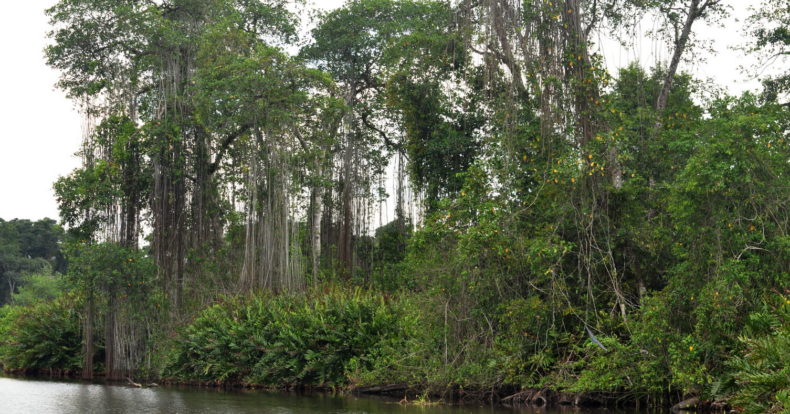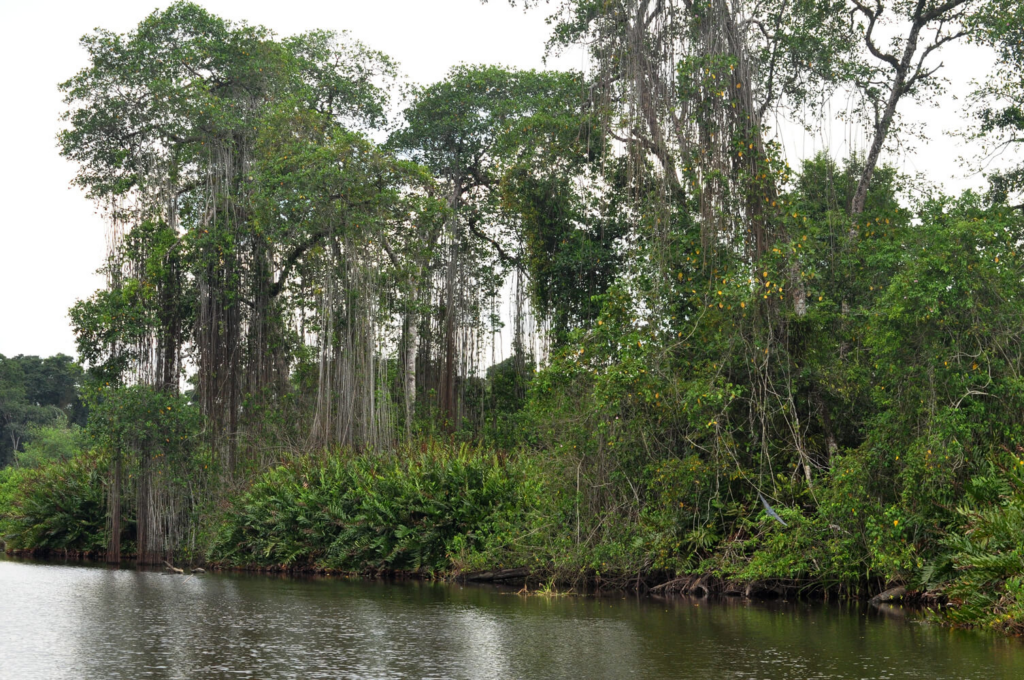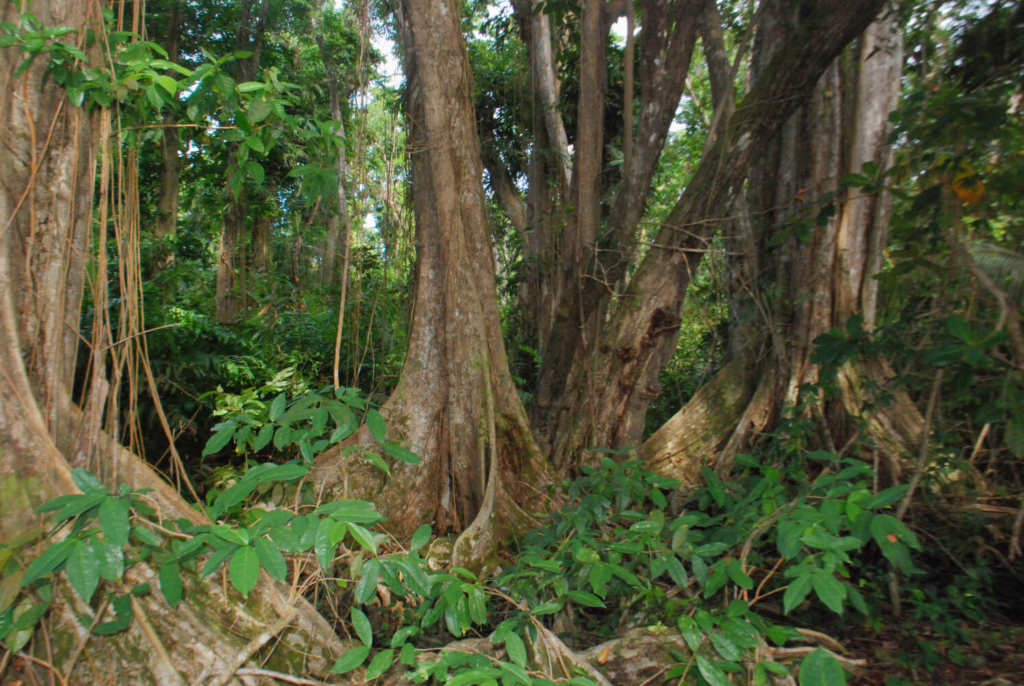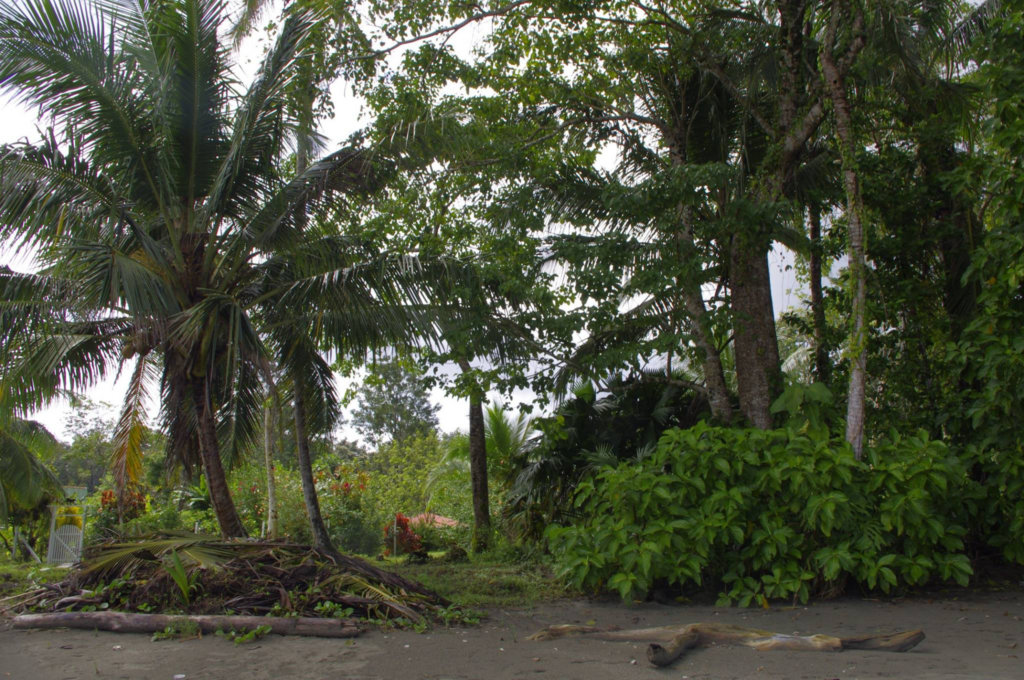Gandoca / Manzanillo: the legal obligations of Costa Rica under the Ramsar Convention

Gandoca / Manzanillo: the legal obligations of Costa Rica under the Ramsar Convention
In the midst of the sustained controversy caused by the logging of trees in the Gandoca Manzanillo region of Costa Rica’s Southern Caribbean, caused in large part by the strange attitude of the authorities in charge of environmental protection, recent information indicates that these same Costa Rican authorities have proposed to revise downward the extent of the Gandoca Manzanillo Wildlife Refuge, listed as a Ramsar site (see nota de prensa published in the digital media Delfino.cr of September 10, 2024).
According to this other note from the Semanario Universidad, published on the same date, it is made clear that an official had warned since August of the attempt to change the boundaries of this Ramsar site (see note), before being … “relocated.” “Relocated”? How so? As it reads.
The referred note reproduces a valuable set of maps in which the identified change and the consequent reduction can be appreciated when compared to the map posted by the Ramsar Convention Secretariat.
It should be recalled that the first images of felled trees in the area released in the Costa Rican press date back to May 15, 2024 (see note from CRHoy).
A brief contextualization
At the end of 2023, the constitutional justice condemned the Costa Rican State for disrespecting Costa Rica’s international obligations in the Southern Caribbean of Costa Rica, on that occasion in the matter of consultation with indigenous populations (see note of the Semanario Universidad). Indeed, in annulling the hearing organized in August 2023 by the Municipality of Talamanca in view of the approval of the Coastal Regulatory Plan, the Constitutional Chamber ruled (see vote31756 – 2023 of December 7, 2023) that:
the exclusion from the consultation of the plaintiff association is unjustifiable in the context of the international obligations acquired by our countrys in this matter.
According to a complete reading of the sentence, it is evident that it was not only the municipal entity that promoted an “express” processing of the Coastal Regulatory Plan for the canton of Talamanca. As has become customary with SETENA (Secretaría Técnica Nacional del Ambiente) in the case of controversial projects, the choice of the second half of December/beginning of January to process its approval is verified again (Note 1), as it is read in this same sentence that:
On December 19, 2022, the technical review form FR-DT-EAE0055-2022 was issued, which concluded to issue the Technical Opinion INF-TEC-DT-EAE-0013- 2022 of the same date (December 19, 2022), recommending the SETENA Plenary Commission to grant the environmental feasibility for the proposed regulatory plan for the maritime-terrestrial zone of the district of Cahuita in the canton of Talamanca, province of Limón. 4. Granting of environmental feasibility: On January 11, 2023, by resolution No. 025-2023-SETENA granted the Environmental Feasibility (License) for the Incorporation of the Environmental Variable to the proposed regulatory plan for the maritime-terrestrial zone of the district of Cahuita in the canton of Talamanca, province of Limón.



In January 2024, social organizations publicly denounced the disrespect of the constitutional judge’s decision by the municipal entity of December 2023 (see note from ElMundo.cr of January 16, 2024).
Just a month later, in February 2024, the Constitutional Chamber ordered the authorities to respect the regulations that protect the wetlands in the canton of Talamanca, and to proceed to update their characterization before approving any territorial regulation project such as a Coastal Regulatory Plan (see vote 03959 -2024 of February 16, 2024). Regarding technical studies of 2021 and 2017, the constitutional judge points out that:
Really, it does not indicate to the Chamber what is the current state of the wetlands in the canton of Talamanca, nor does it offer any reason why the studies that justified the decision of 2017 are technically superior to the material of 2021. Or, conversely, it does not state the reasons why the 2021 study does not correspond to reality or to technical criteria for the protection of the natural patrimony of the State. Therefore, this Court considers that in application of the precautionary principle, as this appeal deals with environmentally relevant goods, constitutive of the natural patrimony of the State, specifically of the wetlands in the maritime-terrestrial zone of the coast of the Talamanca canton, the appeal must be declared admissible with the consequences set forth in the operative part of this sentence.
Needless to say, in March 2017, a National Wetlands Policy was made official in Costa Rica: see Executive Decree 40244 of March 6, 2017 whose recitals reaffirm the importance of wetlands in Costa Rica and their necessary protection, by stating, among many other aspects, that:
The current socio-environmental conflicts that derive from the absence of adequate and balanced governance are precisely due to the fact that the communities that daily share territory with this type of ecosystems lack the norms and instruments that would allow them to carry out an appropriate protection of the state’s natural heritage.
This National Wetlands Policy therefore puts into perspective the current situation of wetlands in the national territory in order to provide tools and action plans to mitigate the problems they face and maximize their potential benefits. The policy that is developed below, raises as a fundamental element the current deterioration of our wetlands that, affected by the impact of different anthropic activities, by the absence of planning in their management, by inadequate techniques of use, disjointed sectoral development policies and the effects of climate change, place us in the primary need to establish strong actions for their recovery”.
This 2018 National University publication, entitled “Costa Rica’s wetlands: fragile ecosystems under threat” (Revista Ambientico) brings together several studies of great interest that maintain a pressing and worrying topicality in this 2024.
The extreme pressure on municipal and national authorities to approve a Coastal Regulatory Plan, bypassing consultations and technical studies required by law, seems to be not entirely unrelated to what is now happening in Gandoca Manzanillo.
Ramsar Convention in brief
As is well known, Costa Rica is a State Party since 1992 to the “Convention on Wetlands of International Importance especially as Waterfowl Habitat”, better known as the Ramsar Convention: the name Ramsar comes from a city located in Iran – spelled رامسر in Persian – where it was adopted in 1971. We refer our esteemed readers to the text of this convention, and to the official status of signatures and ratifications (with 168 States Parties at the time of writing). In 1999, the VIIth Conference of States Parties (better known by the acronym “COP) was held in Costa Rica (see acts of this meeting).
Any Contracting Party shall designate suitable wetlands within its territory for inclusion in the List of Wetlands of International Importance, hereinafter referred to as “the List”, maintained by the Bureau established under Article 8. The boundaries of each wetland shall be precisely described and also delineated on a map, and may include its adjacent riparian or coastal zones, as well as islands or bodies of marine water deeper than six metres at low tide, where they lie within the wetland, and especially where they are important as waterfowl habitat.
article 2 of the international instrument
2. The selection of wetlands for inclusion in the List should be based on their international importance in ecological, botanical, zoological, limnological or hydrological terms. Wetlands which are of international importance for waterfowl at any season of the year should be included in the first place”.
According to official information from the Ramsar Secretariat, the Gandoca Manzanillo wildlife refuge was registered by Costa Rica as a Ramsar site in 1995 (see link).
The possibility of modifying the boundaries of a Ramsar site
Once a wetland has been listed as a Ramsar site by a State, can a State then modify the boundaries of that wetland in order to reduce its extent? Article 4 of the Convention establishes in what seems to us to be a fairly clear way that:
When a Contracting Party, in its urgent national interest, deletes or restricts the boundaries of a wetland included in the List, it should, as far as possible, compensate for the loss of wetland resources and, in particular, create new nature reserves for waterfowl and for the protection of an adequate portion of their original habitat, in the same region or elsewhere.
Unless we are mistaken, there is no reason of urgency or force majeure in Costa Rica today that would justify reducing the boundaries of a wetland listed as a Ramsar site since 1995, such as the Gandoca Manzanillo site.
Article 4 also proposes, as is the case in several protected area conventions, compensation for the reduction of the boundaries of a Ramsar wetland. Nor have the authorities mentioned any compensation measures of any kind in the Gandoca Manzanillo region.


Some specialized sites have been consulted to find out if there is any precedent of a State requesting a reduction in the area of a Ramsar site, but no response has been received so far. At the international level, a few months ago there was a controversy in India with an attempt, this time, to remove the Bhoj wetland, inscribed on the Ramsar list since 2002 (see technical sheet). The request immediately released by the Ramsar Convention Secretariat to verify the exact reasons given and the planned compensation measures (see note of July 2024 of the Times of India) led, a few days later, the authorities to deny any intention to remove this wetland from the Ramsar list (see note of The New Indian Express of 5 August).
It should be noted that in 2002, the VIIIth. Conference of States Parties to the Ramsar Convention held in Spain adopted a resolution in 2002 to provide guidance to States wishing either to remove a wetland from the Ramsar List or to modify its boundaries, and to provide for a procedure for this purpose (see text of Resolution VIII.20 entitled “General guidance for interpreting the term ‘urgent national interests’ in Article 2.5 of the Convention and for considering compensation under Article 4.2”).
Returning to the national level, if the Costa Rican national jurisdictions have summoned the environmental authorities to comply with what they have been ordered since 2019 in Gandoca Manzanillo (see press release from Elmundo.cr on Constitutional Chamber ruling for disobedience), this can in no way amount to a situation of any exception whatsoever.
The attempt to reduce the limits of the Gandoca Manzanillo wetland seems to respond to some witty initiative of the current authorities, one of many within the controversy that has generated their strange actions since the logging that occurred months ago in this part of the Costa Rican South Caribbean: the “affaire” Gandoca Manzanillo promises to occupy the headlines of the Costa Rican press for a long time more in this 2024.
Damage to a Ramsar site in Costa Rica: a not so distant precedent
It is more than surprising that the current Costa Rican authorities seek to limit the scope of their obligations under the Ramsar Convention.
Even more so if it is recalled that Costa Rica notoriously insisted on the extreme fragility of Ramsar sites before the International Court of Justice (ICJ) on the occasion of the illegal incursion in 2010 of Nicaragua in Portillos Island, located within the Northeast Caribbean Refuge (also a Ramsar site registered as such by Costa Rica, see link and map of the same).
Regarding this, the revision of Costa Rica’s pleadings before international justice on the importance of Ramsar sites for Costa Rica would merit an urgent reading (and if necessary, … re-reading) by the current Costa Rican authorities. In January 2011, a Ramsar Convention mission came to detail the various features of the Northeast Caribbean Wildlife Refuge (seemission report of January 3, 2011).
Gandoca / Manzanillo: the legal obligations under the Ramsar Convention
Recall that Costa Rica, due to its own characteristics and the value of owning a Ramsar site, quantified the amount of environmental damage caused by Nicaragua in this extreme part of Costa Rican territory in 2010 at 6.7 million dollars before the judges of the ICJ: this amount was obtained from a methodology perfectly applicable to other Ramsar sites in Costa Rica. The ICJ decision on the amount of compensation for environmental damage between Costa Rica and Nicaragua in February 2018 (see text) reads that:
45. In the present case, the methodology that Costa Rica considers most appropriate, which it terms the “ecosystem services approach” (or “environmental services framework”), follows the recommendations of an expert report commissioned from Fundación Neotrópica, a Costa Rican non-governmental organization. Costa Rica claims that the valuation of environmental damage pursuant to an ecosystem services approach is well recognized internationally, up-to-date, and is also appropriate for the wetland protected under the Ramsar Convention that Nicaragua has harmed. .. /.. 45. Le Costa Rica estime que la méthode la plus appropriée en la présente affaire est celle qu’il appelle la «méthode des services écosystémiques» (ou «cadre d’évaluation des services environnementaux»), qui suit les recommandations d’un rapport d’experts établi à la demande du Costa Rica par la Fundación Neotrópica, une organisation non gouvernementale costa-ricienne. Il soutient que cette méthode d’évaluation des dommages environnementaux est largement reconnue sur le plan international, qu’elle est moderne et aussi adaptée à la zone humide dont la convention de Ramsar impose la protection et à laquelle le Nicaragua a porté atteinte.
The methodology of ecosystem services used by Costa Rica was not validated by the ICJ, by ordering Nicaragua, instead of 6.7 million dollars requested by Costa Rica, to pay only 378,000 dollars (see paragraph 157 of the decision of the ICJ): this is a serious slip of the legal team in charge of Costa Rica’s defense before the judges in The Hague compared to that of Nicaragua, very little analyzed.
A methodology for quantifying environmental damage at Ramsar sites and beyond
However, this methodology officialized by Costa Rica before the ICJ as valid and internationally recognized, should be applicable to other cases in which an assessment of environmental damage must be made within Costa Rican territory.
And even more so, when it is a wetland of global importance registered as a Ramsar site: this is precisely what can be verified in this official Costa Rican publication prepared by the same SINAC (National System of Conservation Areas) of 2017 entitled precisely “Evaluation of the ecosystem services provided by seven of the protected wetlands of international importance in Costa Rica: Palo Verde, Caribe Noreste, Caño Negro, Gandoca Manzanillo, Maquenque, Térraba Sierpe and Las Baulas“(see text).
Also of note is that in 2019, a technical report was released on the expansion of some Ramsar sites, sponsored by two United Nations agencies (UNDP and GEF), entitled “Supporting Technical Report on the expansion of the boundaries of Ramsar sites: Caño Negro National Wildlife Refuge, Northeastern Caribbean Wetland and Térraba Sierpe Wetland” (see text).
Following the decision of the ICJ between Costa Rica and Nicaragua (Note 2), we had the opportunity to suggest that:
As Costa Rica has made official this methodology to quantify very precisely (and comprehensively) the environmental damage caused by Nicaragua on Portillos Island before the judges of the ICJ, the question arises as to whether this same methodology should not from now on be applied in the same way to the destruction of wetlands of international importance, ecosystems and forests that has been occurring in Costa Rica with the greatest impunity for many years. Many of the complaints end up being filed by the Environmental Administrative Tribunal (TAA) in the absence of an assessment of environmental damage by the Costa Rican State: one of the arguments put forward being the absence of a methodology validated by the State to proceed to the assessment of environmental damage.
Gandoca Manzanillo: Intimidation and threats to environmentalists in the South Caribbean
It should be noted that more than two years ago, in August 2022, the term “terrorist” by a congressman – with only a few months on his resume – to refer to environmental groups in the South Caribbean of Costa Rica gave rise to a request for clarification: see note of SurcosDigital. At the same time it was expected (and in fact it is still expected … to date) some reprimand or sanction, or expression of regret by the Board of the Legislative Assembly for the use of such an adjective coming from a Costa Rican legislator: in fact, inciting hatred, stigmatizing a small group, disqualifying its actions with adjectives of this nature should not be acceptable when it is a member of the Legislative Assembly.
The incitement of hatred against those who defend the environment in Gandoca Manzanillo is an extremely serious matter, and semantic slips of any kind should not be allowed.
According to this interview published on the website of the University of Costa Rica (UCR) in 2021 (see full interview), it was read by the renowned author Ana Cristina Rossi, that:
From 1995 to 2000 I was in Holland and I left because I knew they were going to kill me. At the end of 1994 they had killed María del Mar Cordero, Óscar Fallas Baldí, Jaime Bustamante and David Maradiaga, the four members of AECO (Asociación Ecologista Costarricense) who had won the struggle against the woodchip factory in Golfo Dulce. María del Mar, who was my friend, called me and said “Ana, you should see that they are calling me too and threatening me”, I had already written La loca de Gandoca. That saved me from the first threats because there were disguised names like Tigre Frío, one of the ones that threatened me the most. By including those names I stopped the first wave of threats. When María del Mar called me I told her “escibilo, do an article, let it be, let it be on record.
Three years after this interview, last August 14, 2024, a forum organized by the School of Social Sciences of the Tecnológico de Costa Rica (TEC) in Cartago, with the presence of this prestigious author (see video of the forum), was held on the history and current situation in the South Caribbean in the region of Gandoca.
Damage to Ramsar sites could be applied in similar cases within the country
In this forum, it was made clear that in the face of denunciations and warnings made more than 30 years ago, intimidations and death threats that motivated her to write the famous novel “La loca de Gandoca” and to leave the country, it seems that, now, Costa Rica has authorities willing to ignore them, based on an official discourse that distorts reality, interprets the applicable regulations in a whimsical manner, and stigmatizes environmentalists, seeking to whip up tempers. All this is accompanied by an extremely intense communication strategy deployed in social networks.
This same distortion of facts and episodes was also observed in an official Costa Rican communiqué regarding Crucitas circulated on July 15, 2024 (Note 3): a recent report by a group of investigative journalists (see article from La Voz de Guanacaste) confirms that the assertion that ‘the coligalleros steal the gold to take it to Nicaragua’ is just another legend, of the numerous ones promoted by the current Costa Rican authorities and some of their local repeaters (followers, but also professional and business associations and their “experts”). Regarding the alleged resources that gold mining would generate for the Costa Rican State, another very persistent legend was discovered this time by two talented journalists of Semanario Universidad in 2020: see the article titled “Costa Rica exports millions of dollars in gold that pay zero taxes”.
Leaving aside the legends that circulate in Costa Rica around gold, and returning to Gandoca Mazanillo, the defenselessness in which many environmental organizations and members of small communities that raise their voices against the violations of environmental legislation in the Southern Caribbean are found is evident.
The methodology for quantification of environmental damage
From this point of view, it is appropriate to point out the persistent absence of Costa Rica as a State Party to the Escazú Agreement, adopted in March 2018 in … Costa Rica (Note 4). Last August 28, the Constitutional Court released its favorable decision regarding the Escazú Agreement (see official status of signatures and ratifications).
The Colombian Constitutional Court did not find any of the strange “findings” of the Costa Rican Judiciary to hinder its processing, to which we referred in our aforementioned article and in a previous article on the real “myths” created by some sectors against the Escazú Agreement (Note 5).
Gandoca / Manzanillo



Regarding the Executive Branch and the intimidations of all kinds suffered by those who raise their voices in defense of the environment in Gandoca Manzanillo, the recent appearance of the highest authority on environmental issues before a Commission of the Legislative Assembly on August 6 (see video) denoted a rather worrying lack of knowledge: see the “I do not know” heard from him at minute 1:52:01 and which he repeats on three occasions.
It should be noted that a few days before this appearance of the head of the environmental portfolio in Costa Rica, the press had echoed threats (see article of August 2 of the Semanario Universidad and note above of July 29, 2024). A month earlier (end of June) another environmentalist from the South Caribbean had also made public the threats received against him (see note from Elpais.cr of June 26, 2024).
A conclusion
Beyond the limited media selection to which the current office of the Minister of Environment and his advisors seem to have access, it is appropriate to point out that the downward revision of the boundaries of a Ramsar site exhibits a spectacle rarely observed in the international community.
With regard to Costa Rica and the environmental regulations in force, this unusual management seems to encounter internal resistance within the same state apparatus from courageous officials committed to the significance of a Ramsar-listed site.
On the other hand, the action for disobedience before the constitutional justice confirms the refusal of the current authorities (and the previous ones…) to fully comply with what was ordered by the Constitutional Chamber since 2019 in Gandoca Manzanillo.
Gandoca / Manzanillo
Although the methodology for quantifying environmental damage persists as a real gap in the Costa Rican State (which has not wanted to equip itself with this valuable legal tool), from the perspective of the international legal system, it can be argued that international law does not allow in any way to reduce the boundaries of a wetland listed as a Ramsar site: indeed, the aforementioned Article 4 clearly states that such a decision can only be taken “for urgent reasons of national interest”.
Since there is no particularly pressing “emergency” situation in September 2024, the national authorities should proceed to fulfill the mandate that Costa Rica has assumed before the international community, by registering Gandoca Manzanillo as a Ramsar site: consolidating the protection rules in force in this site, expanding and strengthening their scope if necessary, instead of trying to revise them downwards.
On the other hand, forcing the current Costa Rican environmental authorities to comply without further delay with the national obligations derived from the current legal framework in Gandoca Manzanillo and with the previous decisions of the Costa Rican justice system, sanctioning those responsible for the logging observed in 2024, is clearly a task that awaits the Costa Rican environmental sector and the rest of Costa Rican society as a whole with a great deal of urgency.
Notes
Note 1: We refer our esteemed readers to a short (non-exhaustive) list of projects that gave rise to environmental scandals in Costa Rica approved by SETENA in the second week of December: see BOEGLIN N., “Citizen participation in environmental matters: brief notes regarding a recent ruling”, July 11, 2023. Text available here.
Note 2: See BOEGLIN N., “Costa Rica-Nicaragua: notes on the compensation for environmental damage in Isla Portillos set by the ICJ”, February 2, 2018. Text available here.
Note 3: See in this regard BOEGLIN N., “Infinito Gold v. Costa Rica before ICSID: more than a month after an official communication from Costa Rica omitting official ICSID information …”, August 19, 2024. Text available here.
Note 4: We refer our esteemed readers to BOEGLIN N., “Costa Rica and the Escazú Agreement: history of a persistent absence”, Revista de Ciencias Ambientales (UNA, Heredia), Vol. 58 (2024), pp.1-11. Full text of the article available here.
Note 5: See BOEGLIN N., “The myths have arrived! On the recent statements against the Escazú Agreement,” Expert Voice Section, University of Costa Rica (UCR) portal, December 16, 2020. Text available here. Regarding the unusual nature of the finding made by the Judiciary, which apparently has not sparked much criticism in Costa Rica, we refer to the subtitle “The profound solitude of the Costa Rican Judiciary in Latin America” in our article published on the specialized legal site DerechoalDia, in its November 17, 2022 edition.
Navigate articles





